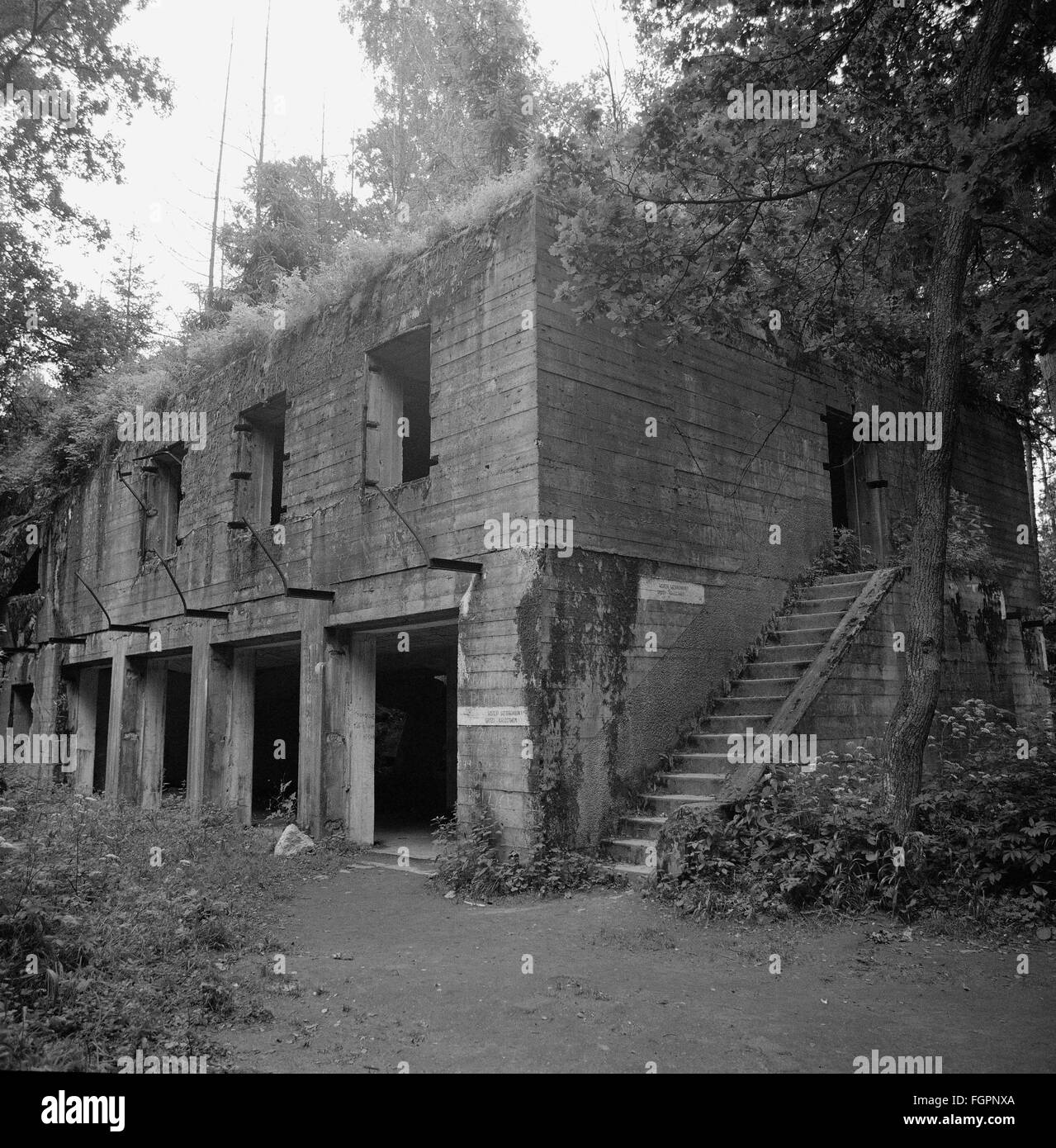- d checkpoints.
A facility for Army headquarters was also located near the complex.[1] The FBK and RSD had responsibility for Hitler’s personal security within the site, while external protection of the complex was provided by the FBB, which had become a regiment by July 1944. The FBB was equipped with tanks, anti-aircraft guns, and other heavy weapons. Any approaching aircraft could be detected up to 100 km (60 mi) from the site. Additional troops were also stationed about 75 km (45 mi) away.[6]
- Office and barracks of Hitler’s bodyguard
- FBK/RSD command post
- Emergency generator
- Bunker
- Office of Otto Dietrich, Hitler’s press secretary
- Conference room, site of the 20 July 1944 assassination attempt
- RSD command post
- Guest bunker and air-raid shelter
- RSD command post
- Secretariat under Philipp Bouhler
- Headquarters of Johann Rattenhuber, SS chief of Hitler’s security department, and Post Office
- Radio and telex buildings
- Vehicle garages
- Railway siding for Hitler’s Train
- Cinema
- Generator buildings
- Quarters of Morell, Bodenschatz, Hewel, Voß, Wolff, and Fegelein
- Stores
- Residence of Martin Bormann, Hitler’s personal secretary
- Residence and bunker of Adolf Hitler
- Bormann’s personal air-raid shelter for himself and staff
- Office of Hitler’s adjutant and the Wehrmacht’s personnel office
- Military and staff mess II
- Quarters of General Alfred Jodl, Chief of Operations of OKW
- Firefighting pond
- Office of the Foreign Ministry
- Quarters of Fritz Todt, then Albert Speer after Todt’s death
- RSD command post
- Air-raid shelter with Flak and MG units on the roof
- Hitler’s bunker and air-raid shelter
- New tea room
- Residence of General Field Marshal Wilhelm Keitel, supreme commander of OKW
- Old tea house
- Residence of Reichsmarschall Hermann Göring
- Göring’s personal air-raid shelter for himself and staff, with Flak and MG on the roof
- Offices of the High Command of the Air Force
- Offices of the High command of the Navy
- Bunker with Flak
- Cementry
- Rastenburg railway line






